What I wrote about in my previous Musings was really the prelude to the focus of this Musings … the publishing of this full-page ad by Bonneville corporate.
Frankly, I had no recollection of this ad, which appeared in the New York Times and Los Angeles Times in late 1975 … possibly because I was likely distracted, as that is when Alicia and I were married — I recently found this glossy re-print among her things.
Bonneville Expands Its Programming
As I stated at the end of that last Musings … with our growing list of Bonneville Broadcast Consultants client stations and the ratings success many were gaining, becoming dominant forces on their market’s radio dial … our one small division of Bonneville International Corporation had become the national face of the Corporation. In itself, Bonneville was not a non-descript broadcaster, as it at this time operated 10 radio stations — the smallest markets being Salt Lake City and Kansas City plus two TV stations.
By this point, the time had come when the corporation finally had something genuine to crow about — considering that these two stations were in the nation’s top two markets — plus when you consider both just a few years earlier had little listenership and little advertising revenue … WRFM consistently ranked near the bottom in audience ratings, and KBIG was in much the same situation. Regarding KBIG-FM, here’s a paragraph from my memoir, RADIO … My Love, My Passion:
“In July of 1971, I personally traveled to Los Angeles to spend two weeks getting Bonneville-owned KBIG-FM up and running and its product refined. I’m not quite sure where to begin with the saga of KBIG. Here was the most powerful FM station in Southern California with by far the best coverage of just about any major-market FM in America. However, it lived within an operation that suffered the worst misallocation of assets I’ve ever seen. This mighty FM station was being “staffed” — but totally unattended — by the largest radio station automation system I’ve ever seen. Meanwhile, its 10,000-watt AM daytime sister, licensed to and transmitting from Avalon on Catalina Island, received all of the attention provided by a full staff, including a crew of major-market-caliber air personalities. Neither station achieved any significant ratings, and most of the duo’s revenues — which were miniscule — were generated by the AM station airing special events, such as the Baja California road races.”
The Beautiful Music Ad
Bonneville Sells KSL-FM
Shortly after this ad was published, KSL-FM would be sold — its call letters changing to KSFI — yet would continue to air Bonneville’s programming, and would achieve even greater success under its new owner. This came at a time when the U. S. Government was putting pressure on entities which owned multiple media outlets in one market to cut back to a maximum of three outlets. In this case, Bonneville’s owning entity, the Mormon Church, was the owner of a Salt Lake City daily newspaper in addition to the KSL stations.
The Bonneville FM Stations Ad
And, you might wonder, why was KOIT in San Francisco missing from the list? At this time, that facility was still KRON-FM, under the ownership of the Chronicle newspaper. It’d be another year before the acquisition was completed, we chose the new call letters and my programming became available to the Bay Area!
“Kick-Ass” Beautiful Music
In case you are not aware of the genre of music/format involved here — as I don’t believe I stated it directly in either this or the preceding Musings — these stations were of the genre which became known as “beautiful music,” a term I never particularly cared for … as, to me, the station was telling the listener what the musical programming was; whereas, it was always my desire to have the listener tell us that they found it “beautiful!” Then, add in the fact that what I programmed I did not classify as being a pure “beautiful music” sound … whereas, our major competitor, the Schulke Radio Productions musical structure was much more in that realm, being a softer, smoother, slower tempo mix. Mentally, but never before put into print, I described what I programmed as “kick-ass beautiful music,” in that it possessed more variety in tempo, in instrumentation, a more out-front presence! In many cases, when going head-to-head with another similarly-formatted station, if our station did a good job of executing the format, our programming achieved greater listenership … as it was meant to brightens one’s life and bring joy to their heart!
And that’s my story for this time … remembering a full-page ad which appeared in the New York Times and Los Angeles Times, placed there 45 years ago by Bonneville International, sharing the great success two of its stations had finally achieved after a too-long wait. And, I was proud to have played a role!
My next Musings will remember the event — the news of which quickly shot around the world — which we’ll celebrate the 75th anniversary of in just a couple of weeks. Do hope you’ll return to read it.
As always, I’d love to read your thoughts and comments on today’s story!


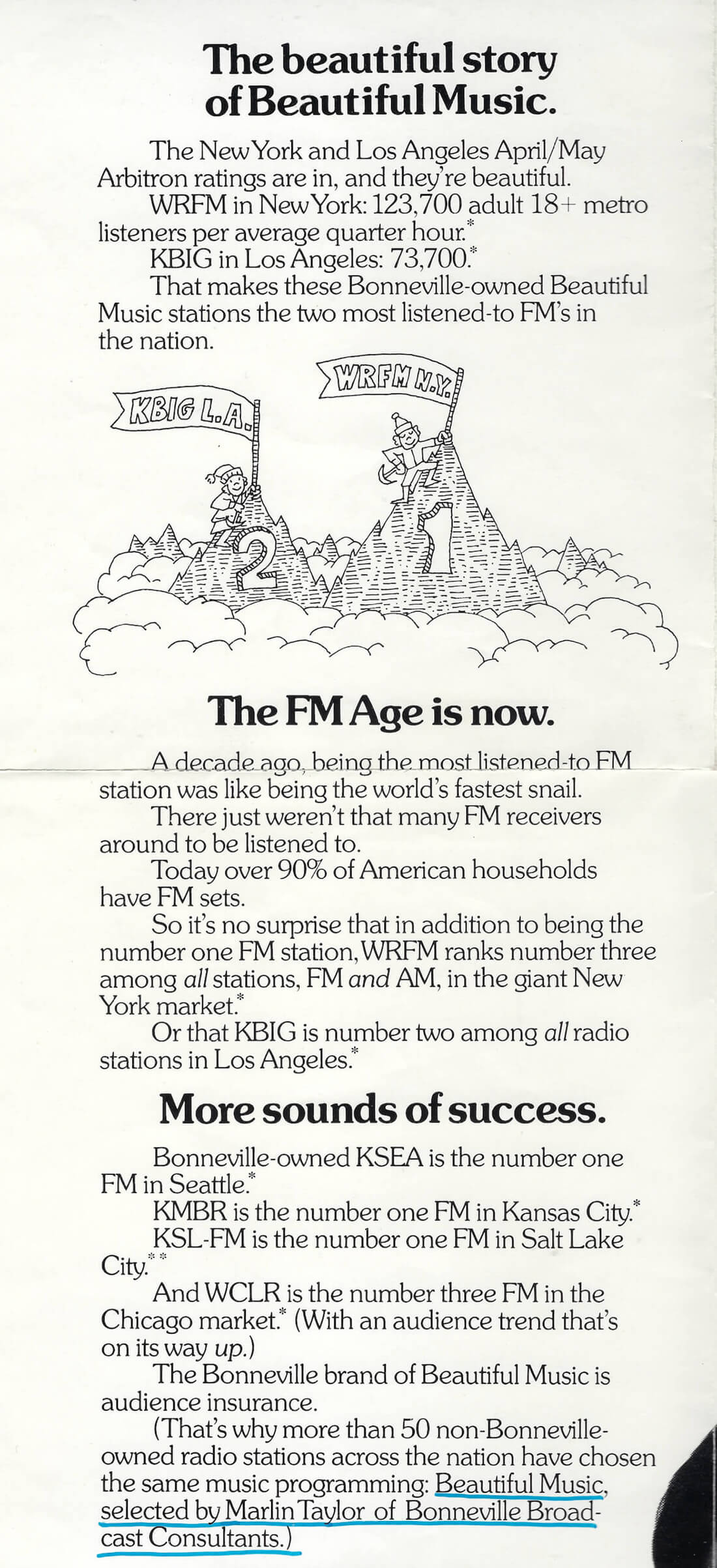


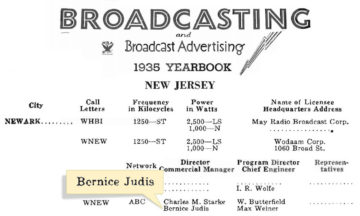
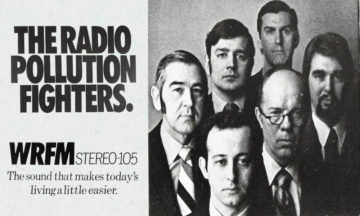
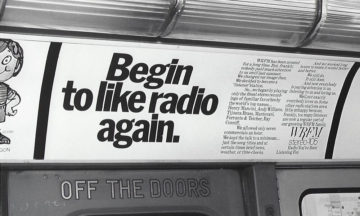
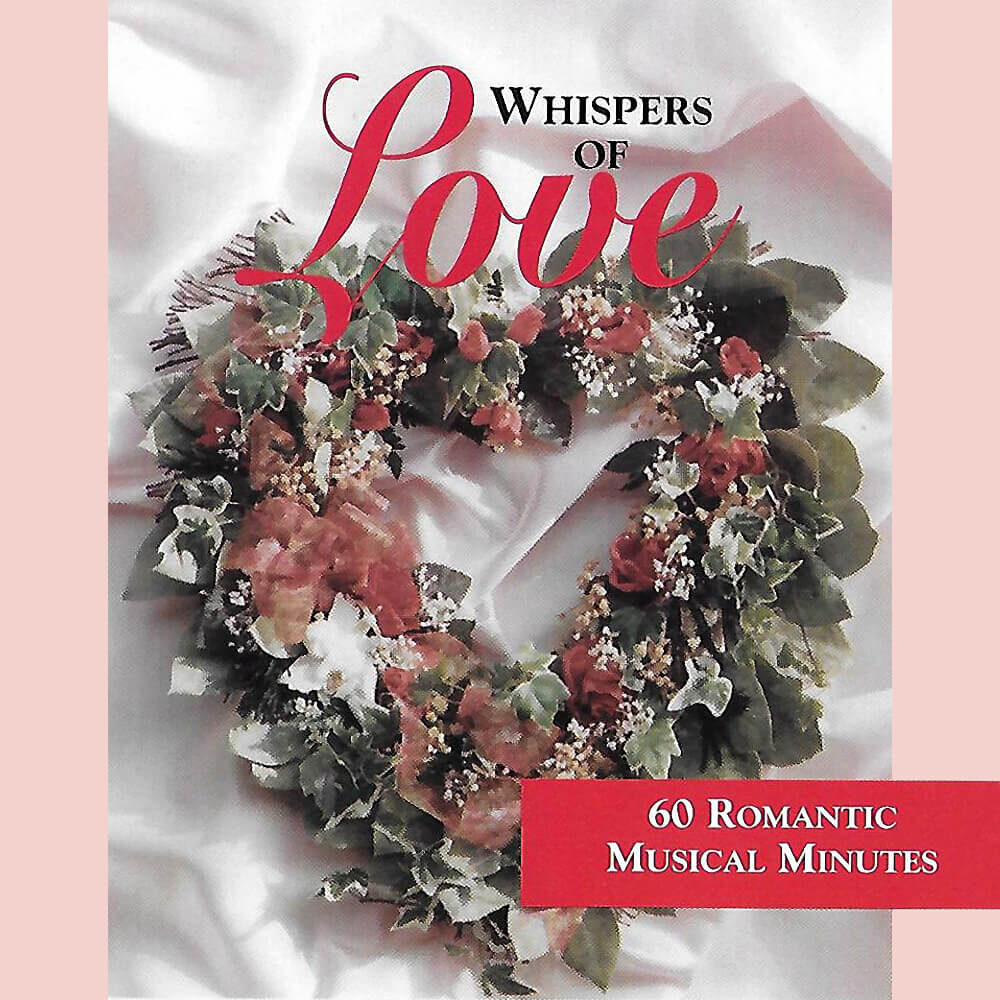
I am so proud to have worked with you, Marlin. I hope you live forever!
Thank you, Mike … likewise in reverse as well! Trust you are staying well.
Marlin,
I truly miss the format as both a listener and broadcaster. Though my stations were programmed by "those other guys,"
I greatly respect what you did for BM/EZ and the growth of FM.
Appreciate your kind words, John … it was a privilege and honor to be able to bring joy to so many lives!
So great, so memorable to review those successes from the '70s. At this time I am continuing to put together
my own biography. Sure glad you reminded me of the ratings successes which translated to new sales records
too.
Let's not forget promotion: taxicabs, billboards and the columnists gave us lots of space. I think it was Bob Foster
of the San Mateo Times who described our "Just desserts" party with guest Tony Bennett. He commented "I left
my diet in San Francisco".
Great collection of memories I remember so well, Robert. BTW, Dick Drury would have referred you to Loring Fisher or myself.
I've always considered the Beautiful Music format a major catalyst in getting people to the FM band. Of course, the FCC's non-duplication rule, and the concurrent shift by manufacturers to include both FM and AM on all new radios, set the stage. But in the early 70's, Beautiful Music stations in many markets soared to the top of the ratings, and suddenly radios in the home and car were set to the FM dial.
Sure great to be reminded of those days in the 70s when listenership was
high and promotions so much fun. The columnists in San Francisco gave
us terrific publicity. One writer suggested that Tony Bennett had "left
his diet in San Francisco", following our just desserts party. You'll recall
we had nearly every taxicab and bus in the bay area telling the people
that "the difference is the music at 96.5 FM". Its good to be reminded of
our work in those days. Dick Dixon
Dear Mr. Dixon
Thank you for teaching me sales in the early 70's. You told me that nothing happens in business with someone selling. Although I left "radio," and earned an advanced degree I got into sales and was very successful. I owe that simple lesson to you.
Peace and goodwill.
Claude Rorabaugh (your former and arrogant production kid at KIRO-FM Fall '73 to early '76.
Love reading your articles. Thank you.
Thank You, Erik!